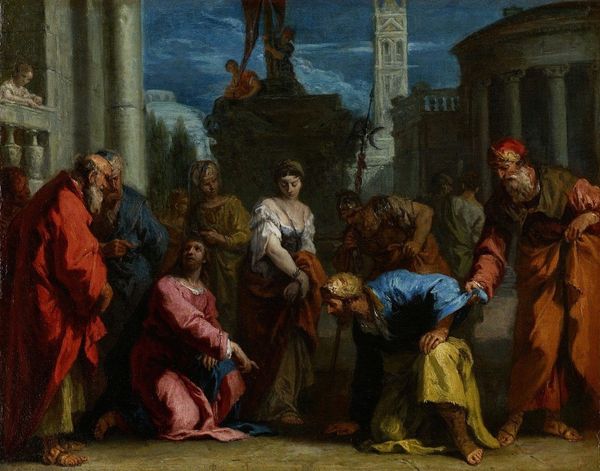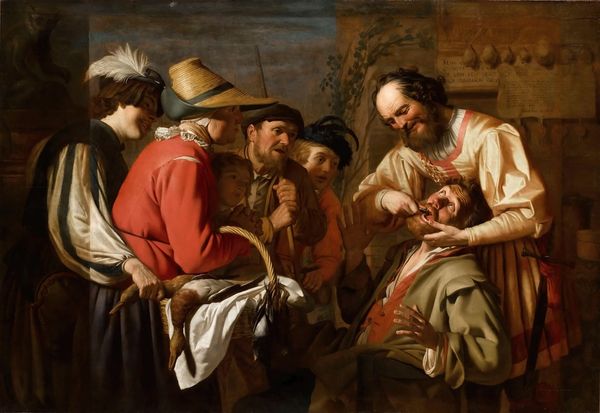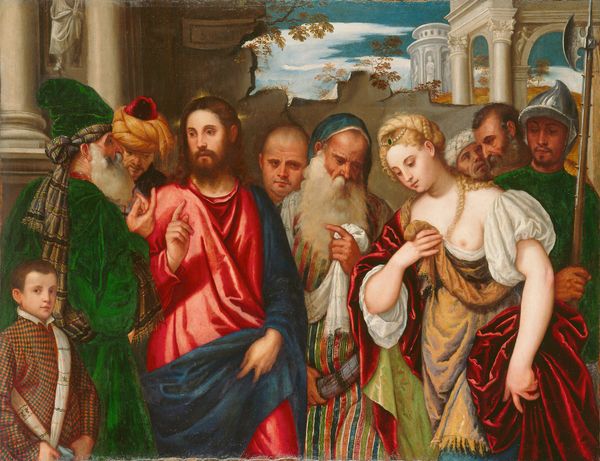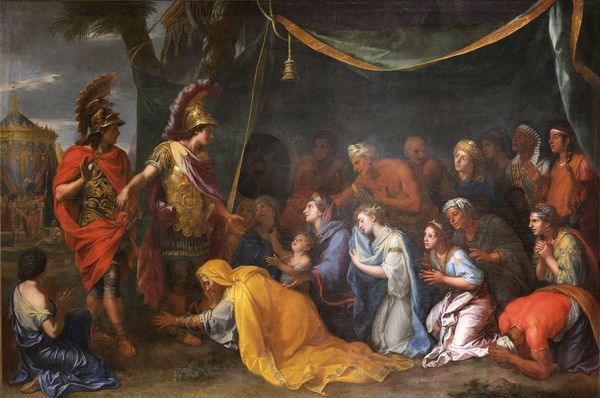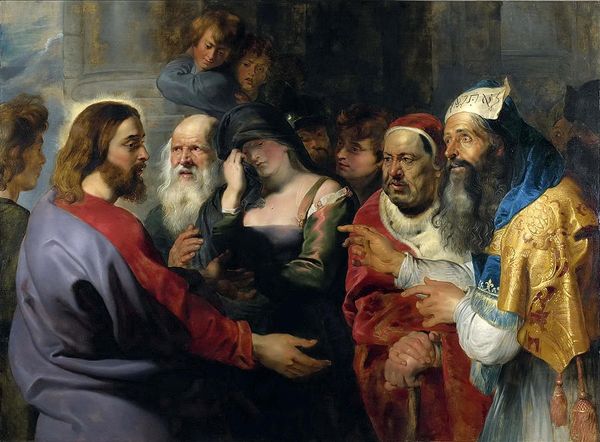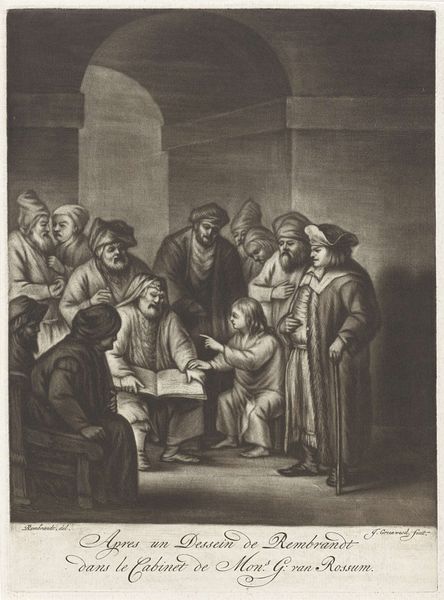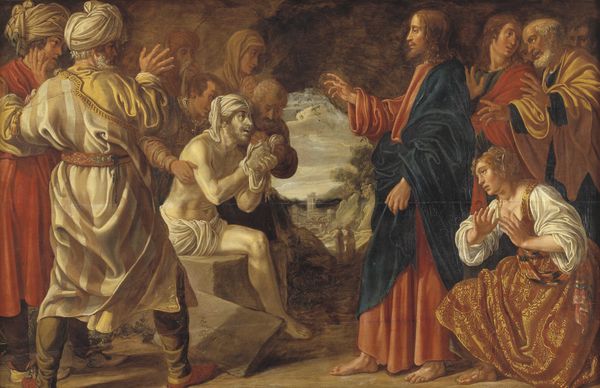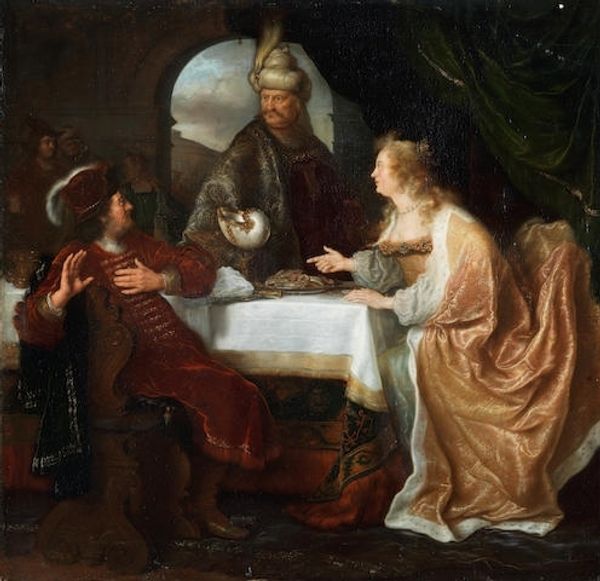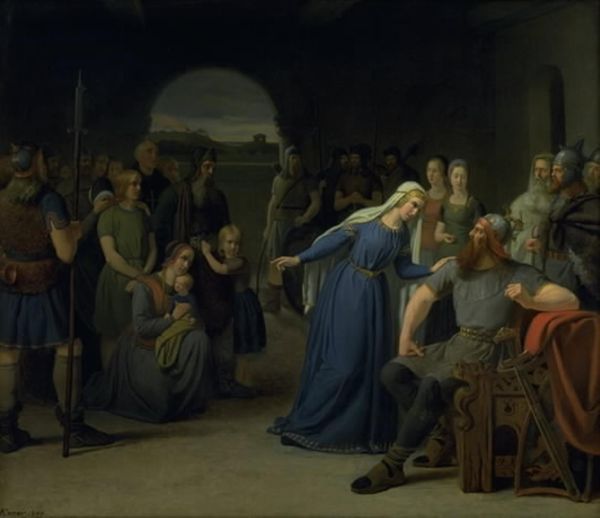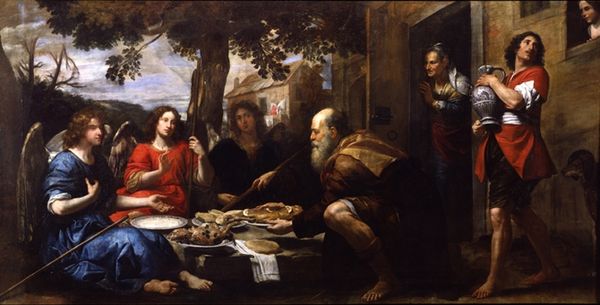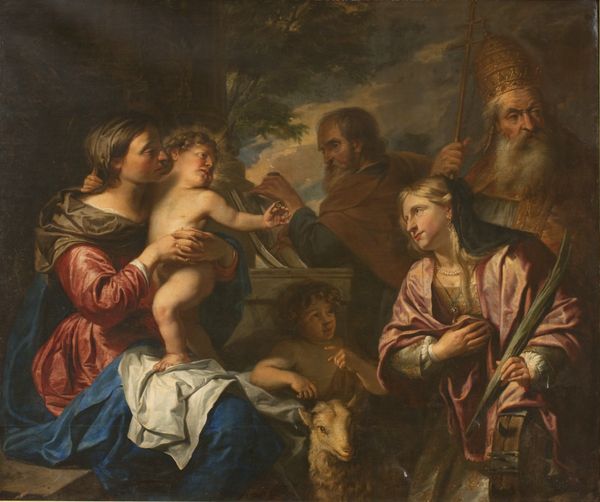
painting, oil-paint
#
narrative-art
#
baroque
#
animal
#
painting
#
oil-paint
#
landscape
#
figuration
#
group-portraits
#
genre-painting
#
history-painting
Dimensions: 180.0 x 201.7 cm
Copyright: Public Domain
Curator: Welcome. We’re looking at Jan Victors’ “Boaz Assumes the Legacy of Elimelech,” an oil painting from circa 1651 to 1653, housed at the Städel Museum. Editor: What strikes me first is how theatrical the composition feels, despite the mundane setting. The figures are tightly arranged almost as though posed on a stage. Curator: Absolutely. The grouping, bathed in that concentrated light, creates a hierarchy. Note the placement of Boaz and Ruth relative to the shadowed onlookers. It speaks to a Baroque understanding of how light defines importance and narrative. Editor: Indeed, and that light almost isolates Ruth, whose red dress draws the eye immediately. That vivid colour, considering its context and era, practically screams womanhood and fertility. It connects, unconsciously perhaps, with the narrative of continuation inherent to the depicted Biblical story. Curator: The visual symbolism of Ruth's dress and its connotations is undeniable. Victors positions colour to enhance both literal depiction and abstract concepts within his artistic vocabulary. However, from a formal perspective, consider the painting's architectural setting and how those rigid columns, starkly receding, contribute to the emotional austerity. Editor: And there’s the gesture with the shoe. I know this piece represents Boaz acquiring the land and kinship responsibilities – is it meant to invoke a deeper, established ritual, some familiar legal or cultural memory for viewers of that period? Curator: Undoubtedly. The shoe represents the renunciation of rights, transferring Elimelech’s legacy, a common ritual across various legal and religious frameworks. Its deliberate central positioning suggests how crucial those established traditions and symbols were for contemporary viewers. Editor: What’s also captivating is the dog in the foreground. Such a familiar domestic animal is so intimately inserted here. I suppose that the common symbol of loyalty and fidelity supports that sense of stability. Curator: Precisely! It subtly but crucially reinforces themes that support and build out an understanding of faithfulness, in both individual character and covenantal promise. Now that we've delved deeper into its structures, would you agree its composition enriches the Biblical account, or does it somehow oversimplify? Editor: I lean toward enriched; the visual language feels rich and dense. Its familiar symbolism adds depth to our comprehension of that central, compelling exchange between figures and story. Curator: Well said. And from my formal viewpoint, I think it all exemplifies how even strict visual composition, skillfully considered and presented, elevates artwork beyond simple illustration to emotionally poignant narration.
Comments
No comments
Be the first to comment and join the conversation on the ultimate creative platform.


